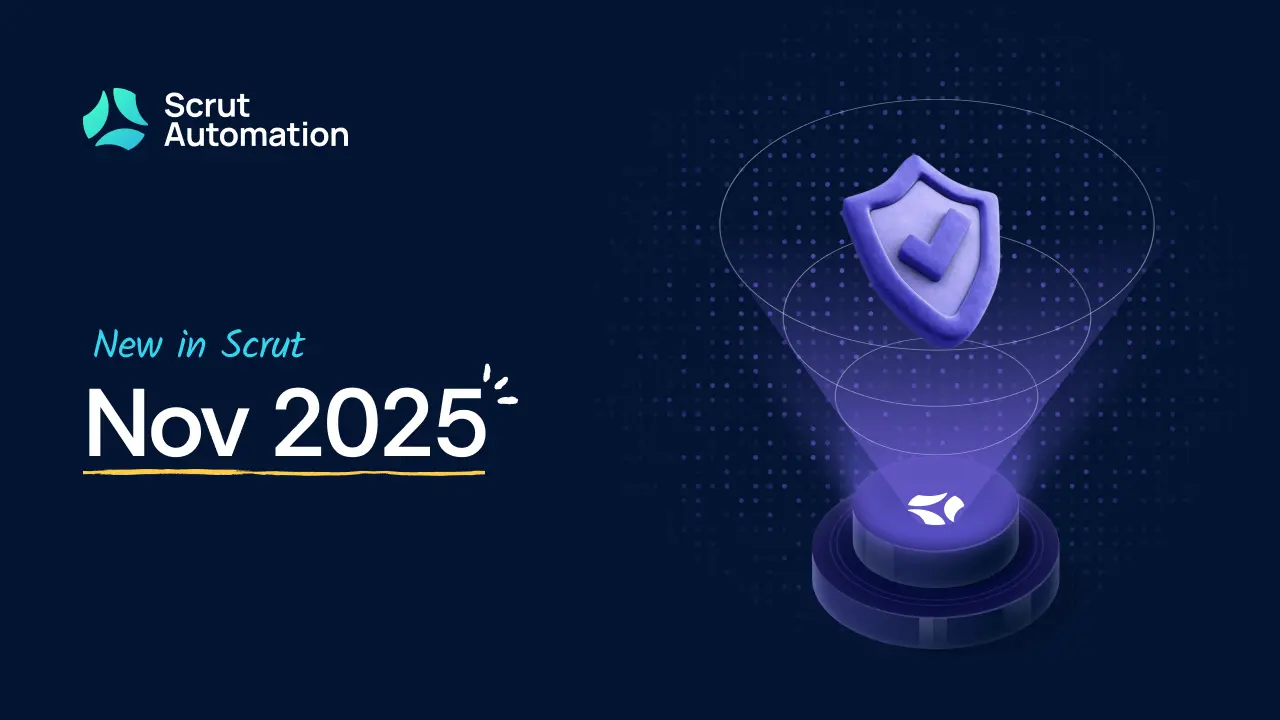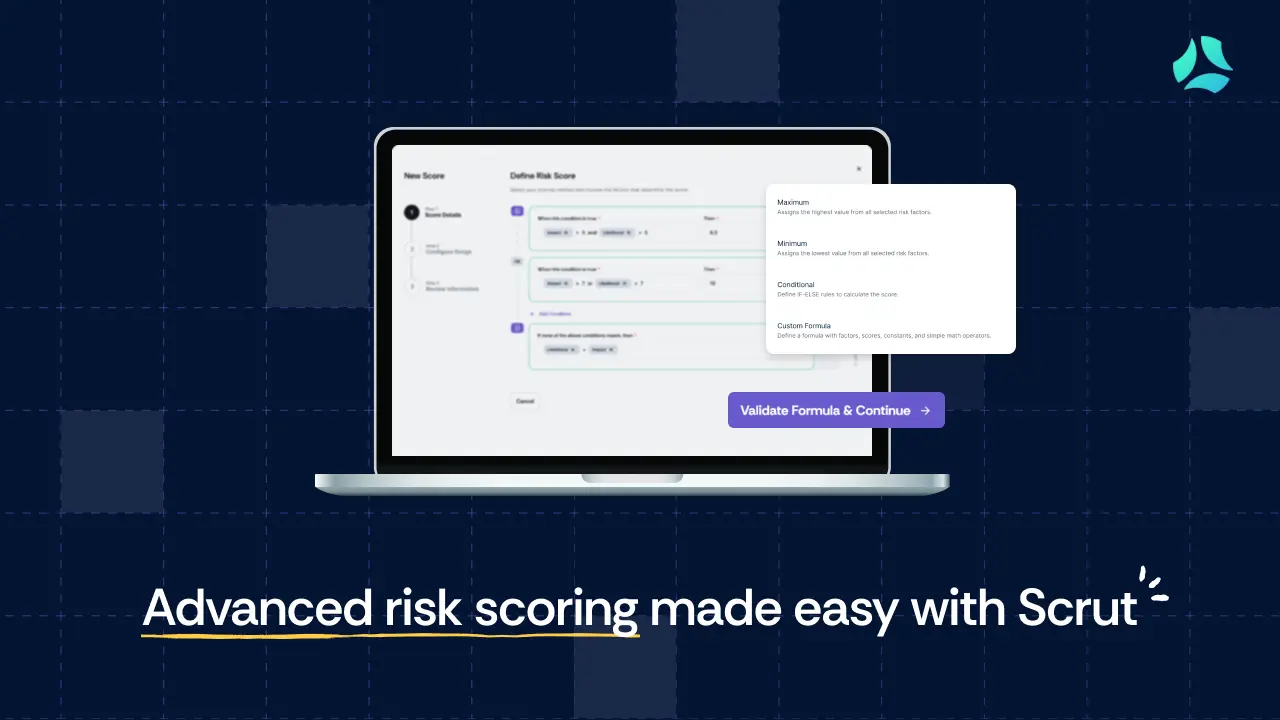ISO 27701: Requirements, steps, and cost

Privacy has moved from being a regulatory checkbox to a foundation of trust. Customers expect it, regulators demand it, and organizations that get it right stand apart. While ISO 27001 provides an international standard for information security, it does not fully address how personal data is collected, processed, and protected. That is the gap ISO 27701 fills.
ISO 27701 builds on ISO 27001 to help organizations demonstrate accountability for privacy. It provides guidelines for extending an existing Information Security Management System (ISMS) to include the management of personally identifiable information (PII) within a Privacy Information Management System (PIMS).
This guide explains what ISO 27701 covers, who needs it, how certification works, and how it connects to standards like ISO 27001 and the GDPR.
What is ISO 27701?
Published by the International Organization for Standardization (ISO), ISO/IEC 27701 is the international standard for a PIMS. It provides the specific requirements and guidance to extend your ISO 27001 information security framework into the realm of privacy, creating a structured system to manage and protect PII.
Any organization that handles personal data, whether as a data controller determining the 'why' and 'how' of processing or as a data processor acting on a controller's behalf, can benefit from this standard. It is especially critical for those subject to regulations like the GDPR or CCPA, or for any business aiming to make privacy a core part of its value proposition and trust-building efforts.
Successful implementation is a top-down endeavor. While ultimate accountability rests with senior leadership to champion and resource the program, the execution is a cross-functional effort. It typically involves your Data Protection or Privacy Officer driving the initiative, supported by your CISO and IT teams implementing technical controls, and legal, HR, and marketing teams integrating privacy into their daily operations.
The certification is granted following a rigorous audit conducted by an independent, accredited third-party body, in conjunction with your ISO 27001 audit, to validate that your PIMS meets the standard’s privacy requirements.
What are the key requirements of ISO 27701?
Achieving ISO/IEC 27701 certification requires demonstrating that your PIMS is systematically established, implemented, and maintained. ISO/IEC 27701 extends ISO/IEC 27001 by adding privacy-specific requirements and controls, meaning your PIMS must align with the underlying Information Security Management System (ISMS) while addressing personally identifiable information (PII). The requirements can be broadly categorized into two groups: the mandatory documentation that forms the backbone of your system, and the key controls that operationalize privacy protection.
Mandatory documentation
The standard doesn't prescribe exact templates, but it explicitly requires your organization to create and maintain specific documents to prove the PIMS is effective. You will typically need around 10-15 core documents, including policies, procedures, and records.
Key mandatory documents include:
- PIMS scope document: A formal document that defines the boundaries of your privacy management system. Which departments, locations, products, and processes are included.
- PIMS policy: A high-level policy, endorsed by top management, that outlines your organization's commitment to privacy and the framework for achieving its objectives.
- Risk assessment and treatment report: Documentation of the process used to identify, analyze, and treat privacy risks to Personally Identifiable Information (PII).
- Data processing inventory (Record of processing activities): A central record that details what PII you process, why, how, where it's stored, and with whom it's shared. This is a direct parallel to the GDPR's Article 30 requirement.
- Data subject request procedure: A documented process for receiving, handling, and fulfilling requests from individuals (e.g., for access, rectification, or deletion of their data).
- Internal audit program and reports: Evidence of planned audits and the results of those audits, which assess the performance of your PIMS.
- Management review meeting minutes: Records of top management's periodic reviews of the PIMS to ensure its continuing suitability, adequacy, and effectiveness.
- Records of security incidents (including breaches): Logs of any privacy or security events, along with the actions taken in response.
Key controls
The controls in ISO 27701 are detailed in its annexes and are split into two types: those relevant to PII Controllers (Annex A) and those relevant to PII Processors (Annex B). Many organizations act as both and must implement a combination.
Key controls for PII Controllers include:
- Control A.8.3.1 (Conditions for collection and processing): Ensuring PII is collected and processed only under a valid lawful basis.
- Control A.8.4.1 (Privacy notice): Providing clear and accessible information to individuals about how their PII is handled.
- Control A.8.5.1 (Choice and consent): Implementing processes to obtain and manage consent where it is the lawful basis, and providing mechanisms for individuals to withdraw consent.
- Control A.8.6.1 (Data subject rights): Establishing a process to enable and respond to requests from data subjects to access, correct, object, or delete their PII.
- Control A.8.8.1 (Data retention and disposal): Ensuring PII is not retained longer than necessary and is securely disposed of thereafter.
Key controls for PII processors include:
- Control B.8.2.1 (Processing agreement): Ensuring all processing is governed by a binding agreement that outlines the processor's responsibilities.
- Control B.8.2.5 (Confidentiality): Ensuring that any persons acting under the authority of the processor are committed to confidentiality
- Control B.8.2.8 (Data return, transfer, and disposal): Having procedures in place to return or delete PII at the end of the service agreement, and for managing international data transfers.
- Control B.8.3.1 (Assistance to the controller): Committing to assist the controller in fulfilling its own obligations, such as responding to data subject requests and conducting privacy impact assessments.
What are the steps to achieve ISO 27701 certification?
Pursuing ISO 27701 certification is a strategic project that demonstrates your long-term commitment to data privacy. The right time to start is before a compliance deadline or a major data processing initiative forces your hand. Ideally, you begin when you have leadership buy-in and are looking to build trust with customers and partners.
The entire process, from initial scoping to certification, typically takes 6 to 12 months, depending on your organization's size, complexity, and existing security foundations (like an ISO 27001 certification). Once achieved, the certification is valid for three years, with annual surveillance audits to ensure ongoing compliance, leading to a recertification audit at the three-year mark.
Step 1: Conduct a readiness assessment and gap analysis
Begin by comparing your current privacy and information security practices against the requirements of ISO 27701. This involves reviewing existing policies, controls, and procedures to identify gaps that need to be addressed before the formal audit. This step saves significant time and resources later.
Step 2: Secure management commitment and define scope
Obtain formal approval and resources from top management. Clearly define the boundaries of your PIMS, specifying the locations, business units, departments, and technologies that will be included in the certification scope.
Step 3: Develop and implement the PIMS
This is the core implementation phase. Develop all mandatory documentation, including the PIMS policy, risk assessment, and records of processing activities. Roll out the required privacy controls for PII Controllers and Processors and integrate them into business-as-usual activities.
Step 4: Conduct internal auditor training and an internal audit
Train staff or hire consultants to conduct an internal audit. This audit is a formal, internal review to verify that the PIMS is implemented effectively and to identify any remaining non-conformities that must be corrected before the external audit.
Step 5: Hold a management review
Top management must review the findings from the internal audit, along with the performance of the PIMS, to ensure it is suitable, adequate, and effective. Their endorsement is crucial for moving forward.
Step 6: Stage 1 audit (Documentation review)
An accredited certification body will review your PIMS documentation to ensure it meets all the requirements of the ISO 27701 standard. They will provide feedback and confirm your readiness for the full audit.
Step 7: Stage 2 audit (Main certification audit)
Auditors from the certification body will perform an in-depth, on-site (or remote) assessment, typically integrated with ISO 27001 surveillance or recertification audits. They will check records, interview staff, and observe processes to gather evidence that your PIMS is fully implemented and effective in practice.
Step 8: Address findings and achieve certification
If any minor or major non-conformities are found during the Stage 2 audit, you must address them with corrective actions. Once the certification body is satisfied, they will issue your official ISO 27701 certificate.
How do you maintain ISO 27701 compliance?
ISO 27701 certification is not a one-time event but a cycle of continuous improvement. Maintaining it requires ongoing vigilance.
Your ISO 27701 certificate is valid for three years. To maintain certified status, you must undergo surveillance audits conducted by your certification body annually. These audits are less extensive than the Stage 2 audit but are crucial for verifying that your PIMS remains effective and that you are addressing new risks and changes. After three years, you must complete a full recertification audit to renew your certificate for another three-year cycle.
Key maintenance activities include:
- Continuously monitoring and measuring your PIMS performance.
- Conducting regular internal audits and management reviews.
- Keeping your risk assessment and documentation up-to-date with changes in your organization, technology, and the legal landscape.
- Promptly addressing any non-conformities or privacy incidents.
How much does it cost to comply with ISO 27701?
The cost for ISO 27701 certification is variable, but generally ranges from $4,000 to over $30,000 USD. The final price depends heavily on factors like your company's size, complexity, and existing security framework.
This investment primarily covers the mandatory external audit fees from an accredited certification body, but you should also budget for internal resource time, potential consulting support, and any tools needed to implement and maintain the required privacy controls effectively.
What other standards is ISO 27701 related to?
ISO 27701 does not exist in a vacuum; it is designed to integrate seamlessly with established frameworks. Understanding its relationship with other standards and regulations is key to building a cohesive governance, risk, and compliance (GRC) program.
ISO 27001:
ISO 27701 is explicitly designed as an extension to ISO 27001, the international standard for an Information Security Management System (ISMS). You cannot fully understand or implement ISO 27701 without a foundation in ISO 27001.
Similarities: Both follow the same high-level structure (Annex SL), requiring systematic management through planning, support, operation, performance evaluation, and improvement. They share a common set of information security controls from ISO 27002.
Differences: ISO 27001 provides a broad framework for protecting all types of information assets (financial data, intellectual property, etc.). ISO 27701 narrows this focus specifically to Personally Identifiable Information (PII), adding privacy-specific requirements for data subjects, legal bases for processing, and distinct obligations for PII controllers and processors. In essence, ISO 27001 is about securing information, while ISO 27701 is about responsibly managing personal data.
GDPR:
The General Data Protection Regulation (GDPR) is a binding legal regulation in the EU, while ISO 27701 is a voluntary certification standard. However, they are deeply aligned in purpose.
Similarities: Both are built on core principles of privacy and data protection, such as lawfulness, purpose limitation, and accountability. Implementing ISO 27701 provides a structured framework to operationalize and demonstrate compliance with many GDPR requirements, like maintaining a Record of Processing Activities (ROPA), managing data subject rights, and conducting Data Protection Impact Assessments (DPIAs).
Differences: The key distinction is enforceability. GDPR is a law with direct legal force, and non-compliance can result in significant fines and legal action. ISO 27701 is a certification that demonstrates a mature management system; it is not a legal "passport" but serves as strong evidence of your compliance efforts to regulators. The GDPR specifies specific legal bases for processing, whereas ISO 27701 provides the control framework to manage whichever basis you choose.
What are the benefits of ISO 27701 certification?
Achieving ISO 27701 certification is more than a compliance exercise; it's a strategic investment that transforms privacy from a legal obligation into a competitive advantage. It provides a structured framework to build trust and operationalize data privacy across your entire organization.
Here are some key benefits:

- Demonstrates compliance and reduces regulatory risk: Provides a certified framework to demonstrate accountability to regulators under GDPR, CCPA, and other global privacy laws, potentially reducing the risk of fines and penalties.
- Builds customer and partner trust: Offers tangible, independently-verified proof of your commitment to protecting personal data, strengthening your brand reputation and becoming a key differentiator.
- Streamlines data management: Forces the creation of a clear data processing inventory and streamlined processes for handling data subject requests, making your organization more efficient and responsive.
- Enhances security posture: By building upon the foundation of ISO 27001, it ensures that privacy protections are backed by robust information security controls, reducing the risk of data breaches.
- Facilitates business partnerships: Many large enterprises now require their vendors to demonstrate strong privacy practices. Certification can be a prerequisite for winning new business and becoming a trusted processor.
- Integrates privacy by design: Embeds privacy considerations directly into your projects and products from the outset, rather than as an afterthought, leading to more secure and compliant outcomes.
- Provides a clear framework for continuous improvement: The standard's management system approach ensures that your privacy program is regularly audited, reviewed, and improved over time, adapting to new threats and regulations.
Expedite ISO 27701 certification with Scrut
Implementing ISO 27701 manually is a complex and time-consuming process. Scrut automates the heavy lifting, significantly accelerating your path to certification. The platform provides a centralized system with 1,400+ pre-mapped controls, 100+ integrations for automated evidence collection, and 75+ expert-vetted policy templates. This eliminates the manual work of building a framework from scratch, ensuring your Privacy Information Management System is always audit-ready. With daily automated monitoring and a live Trust Vault for sharing compliance status, Scrut turns what is typically a multi-month project into a streamlined, efficient process, helping you achieve certification faster and with greater confidence.

FAQs
1. Who needs ISO 27701 certification?
Any organization that handles personal data can benefit, but it is especially critical for data controllers and processors operating under laws like the GDPR or CCPA. It's highly relevant for SaaS companies, healthcare providers, financial institutions, and any business that needs to demonstrate robust privacy management to clients and partners.
2. Is ISO 27701 certification mandatory?
No, ISO 27701 certification is a voluntary, internationally recognized attestation of your privacy management system. However, the privacy laws it helps you comply with (like the GDPR) are legally mandatory. Certification serves as powerful, validated evidence of your compliance efforts.
3. What is the typical timeline to achieve certification?
For an organization with an established ISO 27001 foundation, the process typically takes 6 to 12 months. For those starting from scratch, it can take 12-18 months or more, as building the underlying Information Security Management System (ISMS) is a prerequisite.
4. Which internal stakeholders are involved in implementation?
Implementation is cross-functional. Key stakeholders include:
- Top Management: To provide leadership and resources.
- Data Protection Officer (DPO) / Privacy Officer: To drive the program.
- CISO & IT Team: To implement technical security controls.
- Legal & Compliance Teams: To ensure alignment with regulations.
- HR, Marketing, and Operations: To integrate privacy into daily data processing activities.
5. How does ISO 27701 help with vendor and client contracts?
The standard provides a clear framework for defining the roles and responsibilities of PII controllers and processors. This makes it easier to establish compliant data processing agreements (DPAs). Certification gives both parties confidence that personal data is being managed to a high, internationally recognized standard, simplifying vendor due diligence and strengthening client trust.
6. Can the standard be applied to new technologies like AI and blockchain?
Yes. ISO 27701 is a risk-based framework, not a prescriptive technology guide. It requires you to conduct privacy risk assessments for your data processing activities. This same process applies to AI (e.g., assessing data used for model training) and blockchain (e.g., addressing data immutability), helping you identify and mitigate privacy risks regardless of the underlying technology.
7. What is the impact of Brexit on ISO 27701 and GDPR compliance?
Brexit created two regulatory regimes: the EU GDPR and the UK GDPR. ISO 27701's framework remains highly valuable as it helps demonstrate compliance with both. The UK ICO recognizes the value of risk-based management systems, making certification a practical tool for organizations handling data of both EU and UK data subjects.
8. How does ISO 27701 help with changing privacy laws?
The standard establishes a system for continual improvement and regular review. This means your organization is required to systematically monitor the legal landscape, assess the impact of new regulations on your PIMS, and adapt your controls accordingly. It builds an agile and resilient privacy program that can evolve with the regulatory environment.


















